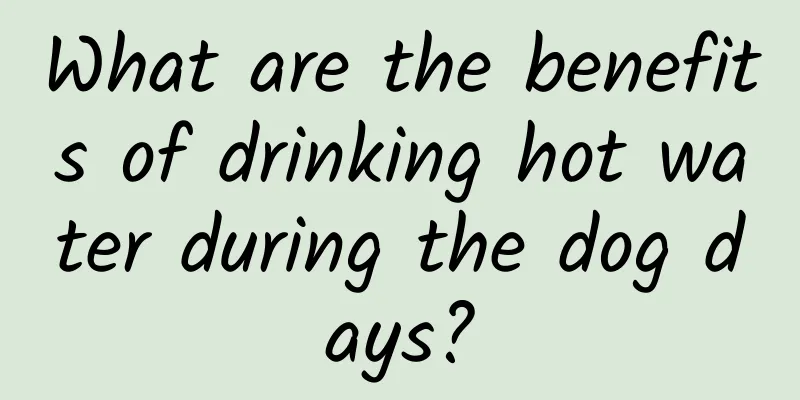Early symptoms of moyamoya disease

|
Many people have heard of different diseases in their lives, but most have not heard of moyamoya disease. A disease like this is mostly caused by many factors. After the disease occurs, the patient will feel headache, and even often have emergency emotional reactions such as tension and crying. In addition, there will be strenuous exercise, excessive eating, and temporary cerebral ischemia in the brain, which will affect the normal movement of brain nerves. Symptoms and signs 1. Cerebral ischemia (1) It may manifest as transient ischemic attack (TIA), reversible neurological deficit (RIND) or cerebral infarction. Because ischemic attacks are brief and symptoms have disappeared by the time the patient sees a doctor or is admitted to the hospital, it is important to obtain a medical history from family members. The following should be recorded in detail: age at first onset, mode of onset (ischemic or hemorrhagic), number of attacks, severity, neurological dysfunction, and precipitating factors and time of occurrence. The last onset of the disease and the course of the disease should also be recorded, and it should be clarified whether the current physical signs are remnants of the last attack or the cumulative result of several attacks. There are some symptoms that family members cannot provide, and we have to rely on suggestive questioning of the patient, such as sensory attacks, headaches, and visual impairment. (2) TIA attacks are often related to excessive tension, crying, stressful emotional reactions, strenuous exercise, eating, excessive cold or excessive heat. (3) Movement disorders are often early symptoms, accounting for about 80.5%, and are mainly manifested as limb weakness or even hemiplegia, often with the above-mentioned inducing factors. Seen in patients with TIA or cerebral infarction. 2. Cerebral hemorrhage Cerebral hemorrhage is the first symptom and is more common in adults. Due to different pathological developments, it can manifest as intraventricular hemorrhage, intracerebral hemorrhage and subarachnoid hemorrhage. Sometimes, due to heavy bleeding or the proximity of the bleeding site to important structures, patients often suffer from severe neurological dysfunction and impaired consciousness. The cause of cerebral hemorrhage is generally believed to be the formation of tiny aneurysms due to the impact of blood flow on the blood vessel walls as people age, or the rupture and bleeding of the smoke vessels at the base of the brain. 3. Epilepsy Some patients present with epileptic seizures, which may be partial or generalized. 4. Involuntary movements Involuntary movements usually occur on one side of the limbs, performing dance-like movements. Involuntary facial movements are rare in moyamoya disease and disappear during sleep. 5. Headache Some patients suffer from headache. The cause of the headache is probably related to reduced intracranial blood supply. Clinically, it has been shown that many patients with moyamoya disease who suffer from headaches have their symptoms disappear on their own after undergoing vascular reconstruction surgery. 6. Intelligence: Patients with moyamoya disease have varying degrees of decreased IQ due to cerebral ischemia. According to the Matsushima classification, the average IQ of type I is 111.4, the average IQ of type II is 88.9, the average IQ of type III is 68.9, and the average IQ of type IV is 63.9. This shows that the more severe the cerebral ischemia, the greater the impact on IQ. Performing IQ and developmental tests on patients before and after treatment can help evaluate the effectiveness of surgery. Drug treatment: Because the cause of this disease is still unclear and the progression of the disease is difficult to predict, some patients may recover spontaneously due to adequate collateral blood supply, which improves the cerebral ischemia. However, other patients suffer from irreversible neurological dysfunction due to decompensation, so these two situations should be taken into consideration in clinical treatment. 1. Medical treatment is mainly symptomatic. For ischemic onset, vasodilators and anticoagulants can be used. Hemostatic drugs and antifibrinolytic drugs are used for patients with cerebral hemorrhage. For patients with epilepsy and involuntary movements, appropriate symptomatic treatment should be given. Intracranial pressure should be appropriately controlled in patients with cerebral hemorrhage and intracranial hypertension. 2. Surgical treatment (1) Purpose: To increase brain collateral circulation, improve cerebral blood supply, and restore normal neurological function through surgical methods before irreversible neurological dysfunction occurs in brain tissue. (2) Surgical methods: can be divided into direct and indirect vascular reconstruction surgery. |
<<: What to do if you get prickly heat?
>>: What is depression called in traditional Chinese medicine?
Recommend
How to make ginger wraps for soles of feet?
In fact, there are some folk treatments that are ...
What are the symptoms of renal overdraft?
The kidneys are very critical organs, but imprope...
Tips to bring your period earlier
In daily life, due to some special reasons, you m...
Why do my palms and soles sweat?
I believe that everyone generally has symptoms of...
Ways to relieve migraine headaches
We may encounter migraine at any time in our live...
What causes liver pain?
There are many acupoints in our body. In traditio...
Is cantaloupe cold in nature?
Due to the hot weather in summer, many families a...
What is the treatment for acute lumbar sprain?
If an acute lumbar sprain occurs, the patient sho...
What does epilepsy have to do with sheep?
Epilepsy has nothing to do with contact with shee...
Chinese patent medicine for anxiety disorders
If you have anxiety disorder, you must seek timel...
What happens if menstruation does not come after artificial abortion?
Artificial abortion is a method of resolving preg...
The main symptoms of early hemorrhoids in women
Hemorrhoids are very common in life, and women ar...
TCM treatment of anxiety disorder
Neurotic anxiety disorder is a relatively serious...
What is the reason for thick white tongue coating during confinement? Teach you how to identify it
For postpartum women, they can usually detect rel...
How many days of pregnancy can you use medicine to abort
If a female friend has an unexpected pregnancy an...









